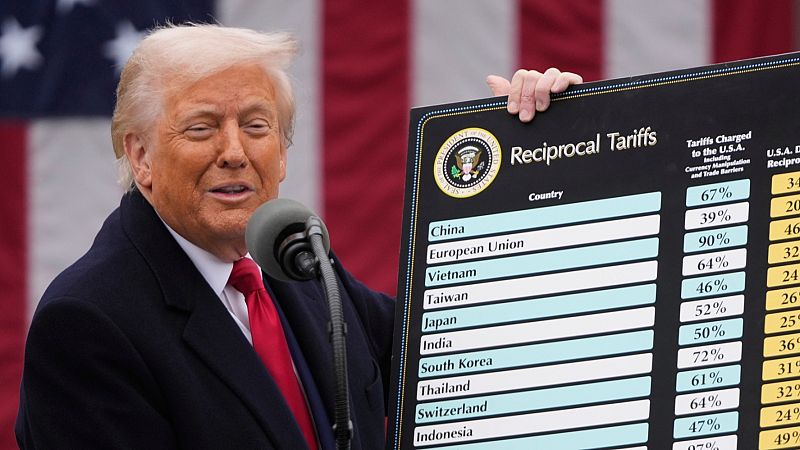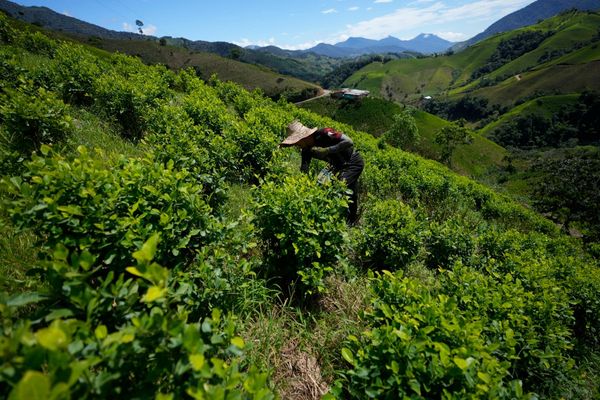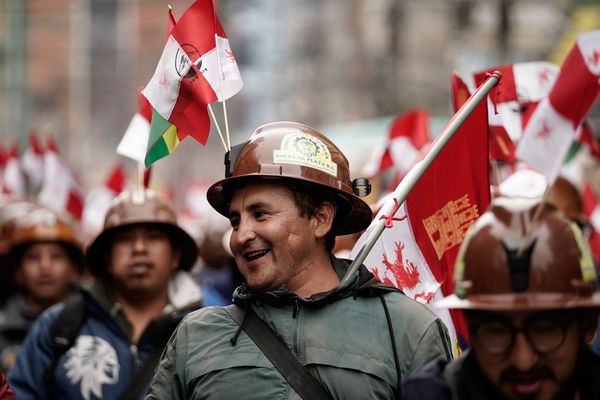
After a series of pauses and extensions, the “Liberation Day” country-specific tariffs unveiled in April are set to snap back into force in seven days, delaying a 1 August deadline. Aside from a few countries who negotiated deals, many nations will see US levies revert to their original rates.
The Liberation Day tariffs were announced on 2 April, after President Trump branded the US trade deficit a national emergency. Far more goods were flowing into the country than American products were being sold abroad.
By invoking the International Emergency Economic Powers Act (IEEPA), Trump proceeded to sign executive orders that imposed what the government branded as "reciprocal tariffs". Namely, they were meant to counteract or reciprocate damaging trade practices and trade barriers. This is despite the fact that many analysts have attributed the US trade deficit to the strength of the dollar and consumer demand for foreign products.
Countries like Myanmar and Lesotho had some of the highest tariff rates threatened on 2 April, at 44% and 50% respectively. In terms of trade volume affected and product reliance, countries like China at 34% or the EU bloc at 20% were — however — the biggest shocks to global markets and trade flows.
For countries that weren't given a specific rate, a blanket tariff of 10% came into force on 5 April. On 9 April, the reciprocal tariffs were supposed to go into effect.
First suspension
After the initial announcement sent markets tumbling, Trump signed a 90-day suspension of the higher, country-specific reciprocal tariffs, which was set to expire on 9 July. The 10% baseline tariff based on IEEPA powers stayed in force.
China, which had introduced a matching retaliatory tariff of 34% on the US, then got slapped with an additional 50% US tariff on April 9 — one they also then imposed back on the US. At this point, the US rate on Chinese goods came to 84%, not including an extra 20% fentanyl levy.
In a tit-for-tat between the two biggest economies in the world, the US then raised the Chinese tariff rate to 145% (including the fentanyl levy). China responded with a total tariff rate of 125%, but said they would ignore future tariff increases.
“Even if the US continues to impose higher tariffs, it will no longer make economic sense and will become a joke in the history of world economy,” the Chinese Foreign Ministry said at the time.
On 12 May, an agreement was reached to reduce the tariff rates, bring the US levy on Chinese goods to 30% and the Chinese levy on American goods to 10%. Both sides said they would re-assess the situation after 90 days. Negotiations for a comprehensive agreement are currently underway.
Peter Navarro, Trump's counsellor on trade issues, told Time magazine that the US was open to negotiating individual deals with countries and that “90 deals in 90 days” — referring to the 90-day delay windows everyone received — was possible. The country has fallen far short of that, although a number of deals were sealed last-minute.
Deals struck so far
The UK was the first to secure a trade framework with the US on 16 June that kept the 10% baseline in place, with exceptions for some industries.
Vietnam reached a deal on 2 July after facing a rate of 46% in the original "Liberation Day" package. It now faces a 20% tariff, excluding goods that travel through Vietnam from third countries and are destined for the US.
Thailand and Cambodia, who struck deals shortly before the deadline, both received a 19% duty, from 36% and 49% respectively.
Second suspension
A second tariff delay was announced on 9 July, postponing the return of the Liberation Day tariffs until 1 August.
Deals were subsequently struck with Indonesia, lowering the tariff rate to 19% from the original 32% rate, and the Philippines struck a preliminary agreement that would lower its rate to 19% as well.
Japan and South Korea both announced that trade deals had been reached toward the end of July, both securing rates of 15%. That's a reduction from 24% for Japan and 25% for South Korea.
An agreement was reached with Pakistan that would see the US develop its oil reserves in return for lowering the tariff rates to 19%. Previously, Pakistan was subject to a 29% rate.
The EU reached an agreement with Trump on 27 July, lowering the rate to 15%.
What about pre-Trump trade agreements?
The United States–Mexico–Canada Agreement (USMCA) was signed by Trump in his first mandate to replace NAFTA, the previous trade agreement between the three countries.
On 1 August, Canada is set to see tariffs on its US exports rise to 35%, although White House officials have suggested the new rate will only apply to goods not covered under the USMCA. Nearly 90% of Canadian goods imported into the US are exempted under the free trade deal.
Mexico, meanwhile, was expecting to face a 30% tariff until Trump proposed a 90-day negotiating period on Thursday.
Trump, posting on his Truth Social platform, said a phone conversation he had with Mexican leader Claudia Sheinbaum was “very successful in that, more and more, we are getting to know and understand each other".
The Republican president said that goods from Mexico imported into the US would continue to face a 25% tariff that he has ostensibly linked to fentanyl trafficking. He said that autos would face a 25% tariff, while copper, aluminium and steel would be taxed at 50%.
He said that Mexico would end its “Non Tariff Trade Barriers”, but he didn’t provide specifics.
Some goods will continue to be protected from the tariffs by the USMCA.
Steel, aluminium, copper, Brazil and India
Meanwhile, a 50% universal tariff was imposed on steel and aluminium products on 4 June. The UK faces only a 25% steel and aluminium tariff, and negotiations are underway for that to be possibly lowered further.
On 30 July, Trump announced semi-finished copper products such as rods and sheets and copper-intensive products such as cables and electrical components will face a 50% tariff starting on Friday.
Ahead of Friday's tariff package, Trump announced that a 25% tariff would be imposed on India along with another unspecified penalty for importing Russian oil and weapons despite US sanctions.
President Donald Trump also signed an executive order on Wednesday to place a 50% tariff on Brazil, setting a legal rationale that Brazil’s policies and criminal prosecution of former far-right President Jair Bolsonaro constitute an economic emergency under a 1977 law.
Trump had threatened the tariffs on 9 July in a letter to President Luiz Inacio Lula da Silva. But the legal basis of that threat was an earlier executive order premised on trade imbalances being a threat to the US economy.
The US nonetheless ran a $6.8 billion (€5.8bn) trade surplus last year with Brazil, according to the US Census Bureau, undermining the original basis for the Liberation Day tariffs.
Russia, anyone?
Russia was not part of the initial Liberation Day tariffs, a move some saw as an indicator of Trump's alleged soft spot for Russian President Vladimir Putin. Yet due to sanctions that carried over from the administration of President Joe Biden, the trade volume with Russia had dropped significantly following the full-scale invasion of Ukraine in 2022.
On 14 July, Trump gave Putin a 50-day deadline to broker a ceasefire with Ukraine or else it would face a 100% tariff targeting nations that purchase oil and gas from Russia. During his recent trip to Scotland, he said he was "probably" shortening the deadline to 10-12 days, stating: "Because I think I already know the answer what's going to happen."
Republican Senator Lindsey Graham introduced a bill in Congress that, if passed, would see countries that import Russian gas, such as India, face a whopping 500% tariff.
So what happens now?
Legally, because the previous tariff suspensions were temporary, all countries that have not negotiated a separate trade deal will see their Liberation Day rates re-imposed.
For nations not given a country-specific rate, the minimum tariff for imports has been set at 10%, a relief for those who feared that the baseline may double. Trump has also included a 40% penalty for transshipped goods intended to avoid duties.







